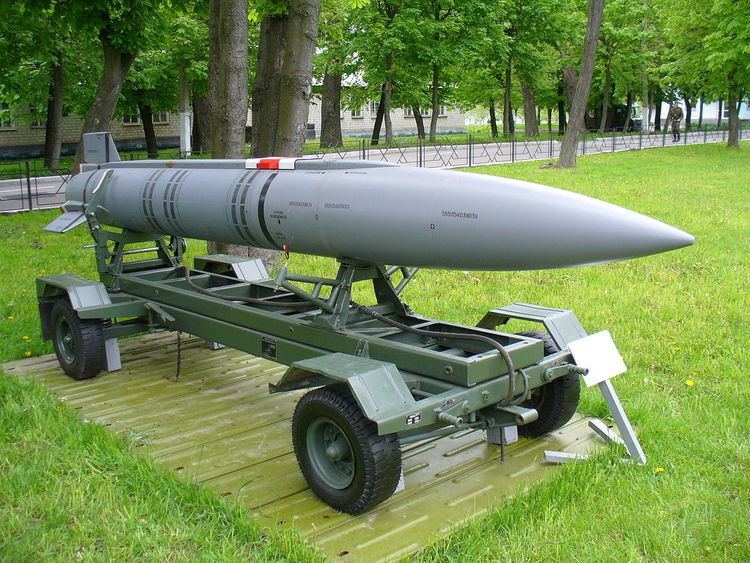Designed 1974-1980 | In service 1980 Designer Raduga | |
 | ||
Type air-to-surface missileantitank missile | ||
The Raduga Kh-15 or RKV-15 (Russian: Х-15; NATO: AS-16 "Kickback"; GRAU:) is a Russian air-to-surface missile carried by the Tupolev Tu-22M and other bombers. Originally a standoff nuclear weapon similar to the U.S. Air Force's AGM-69 SRAM, versions with conventional warheads have been developed.
Contents
Development
In 1967, MKB Raduga started developing the Kh-2000 as a replacement for the Kh-22 AS-4 'Kitchen' heavy anti-shipping missile. Development of the Kh-15 started some time in the early 1970s. The sophistication of the design made it suitable for other roles, and a nuclear-tipped version was developed in tandem with the conventionally armed variant. An upgrade under development was cancelled in 1991, but reports in 1998 suggested an upgraded Kh-15 might be fitted to Su-35(Flanker-E) tactical aircraft.
Design
The Kh-15 climbs to an altitude of about 40,000 m (130,000 ft) and then dives in on the target, accelerating to a speed of about Mach 5, which makes it the fastest aircraft-launched missile to date.
Operational history
It entered service in 1980. It can be carried by the Su-33, Su-34, Tu-95MS-6 'Bear-H', Tu-22M3 'Backfire C', and Tu-160 'Blackjack'.
